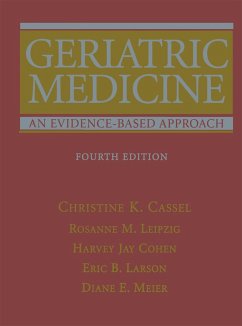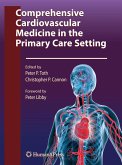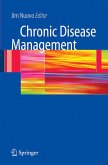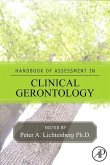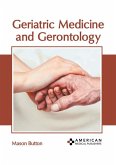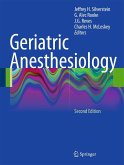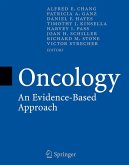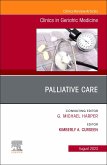This new edition of a critically-acclaimed text, completely revised and updated, offers practical and comprehensive coverage of the diseases, common problems, and medical care of older persons. Building on the third edition, this revision will present a new approach focusing on Evidence-Based Medicine, with new chapters including: Physiology of Aging, Clinical Strategies of Prescribing for Older Adults, Chronic Disease Management, Prevention, Doctor-Patient Communication Issues, Sources of Suffering in the Elderly, and many others. In addition, there will be a separate chapter on Evidence-Based Geriatrics, as well as sidebars in every chapter, where applicable, on Evidence-Based Medicine. This will be an all-encompassing, authoritative volume on geriatric medicine, needed more than ever because the over-80 population is the fastest growing age group in the country.
Since the publication of the third edition of Geriatric Medicine,extraordinary advances have occurred in the science of aging and the potential for biomedical research to give us answers to many, if not most, of the age-related disorders that threaten the quality of life in older years. At the most basic level, the successful mapping of the human genome was declared complete in the fall of 2000. Understanding the map of the human genome is as important as understanding the map of genomes of important laboratory species, ranging from the microscopic worms and fruit?ies used in most classic genetic studies to rodents such as laboratory mice, and eventually to primates, on which much of the research on the aging human brain is done. The genetic maps of all of these species,including our own,does not answer clinical questions,but it does open the door to dramatic, rapid, and ef?cient answers to questions about the genetic polymorphisms related to diseases in humans. The telomerase story also unfolded since the third edition. Telomerase is an enzyme responsible for maintaining the telomeres-the redundant DNA portions at the end of chromosomes-whose shortening seems to be linked directly to cell senescence,ap- tosis,and the control over cell death,which,at the level of the individual cell,seems to be linked to the decline of organ function and eventually aging and death within the org- ism.
Hinweis: Dieser Artikel kann nur an eine deutsche Lieferadresse ausgeliefert werden.
Since the publication of the third edition of Geriatric Medicine,extraordinary advances have occurred in the science of aging and the potential for biomedical research to give us answers to many, if not most, of the age-related disorders that threaten the quality of life in older years. At the most basic level, the successful mapping of the human genome was declared complete in the fall of 2000. Understanding the map of the human genome is as important as understanding the map of genomes of important laboratory species, ranging from the microscopic worms and fruit?ies used in most classic genetic studies to rodents such as laboratory mice, and eventually to primates, on which much of the research on the aging human brain is done. The genetic maps of all of these species,including our own,does not answer clinical questions,but it does open the door to dramatic, rapid, and ef?cient answers to questions about the genetic polymorphisms related to diseases in humans. The telomerase story also unfolded since the third edition. Telomerase is an enzyme responsible for maintaining the telomeres-the redundant DNA portions at the end of chromosomes-whose shortening seems to be linked directly to cell senescence,ap- tosis,and the control over cell death,which,at the level of the individual cell,seems to be linked to the decline of organ function and eventually aging and death within the org- ism.
Hinweis: Dieser Artikel kann nur an eine deutsche Lieferadresse ausgeliefert werden.
From the Third Edition: "The third edition ¿covers basic gerontoloic concepts, contexts of care, clinical approaches to the geriatric patient, medical disorders, and ethics and health policy¿consistent effort throughout the chapters to address how the site of care, coexisting conditions and the health status of the patient influence management. The book offers an approach to serving as a knowledgeable advocate for older adults, ranging from the vigorous 80-year-old in whom prevention and assertive intervention may be appropriate to the elderly person who is dying and needs a provider with extensive skills in comfort care and communication with patients. Other perspectives unique to geriatrics are demonstrated in chapters on the determination of decision-making capacity, screening for cancer, nutrition, and pain management. Geriatrics is and will continue to be a predominant part of the daily practice of most generalists. I recommend [this book] for thoughtful reading about rational and compassionate management of geriatric problems." -- New England Journal of Medicine

